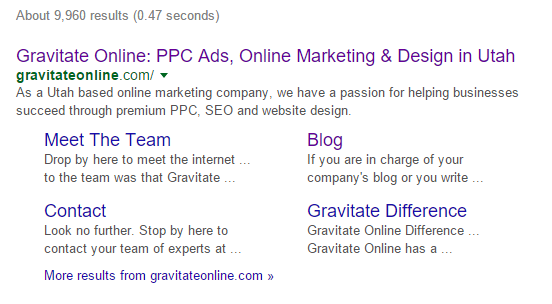If you’ve been around the SEO world for more than 5 minutes, you’ve almost certainly heard of title tags. What is much less certain is what you’ve heard about them. I heard they were the silver bullet that will put you on the top of every search engine results page. On the same site, I read that they are just a remnant of the way the web used to be and you shouldn’t spend much time on them. Of course, the truth lies somewhere in the middle. Let’s explore a bit.
What is a title tag?
An HTML document is made up of a collection of components and elements that describe the page. For example, this is a “strong” (bold) tag and this one is an “emphasis” (italics) tag. HTML does far more than just format text though. The title element, as you might have guessed, represents the title of the page. It doesn’t show up as part of the page content, however; it’s far more subtle than that. It shows up here:
And here:
And here:

Something that prominent deserves some attention, regardless of how much weight it carries in Google algorithms. Which brings up the question: how much weight does it carry in the Google algorithms? Of course, no one outside of Google knows for sure, but based on a whole lot of empirical evidence and observation, it carries a lot. As I mentioned, there are many different schools of thought when it comes to the title, but it’s almost universally agreed that a good title is among the most important factors to successful SEO.
What makes a good title?
This is where the schools of thought really diverge, forming heated football rivalries and vandalizing each others’ campuses. The three models I’ve seen most commonly are these:
- List of keywords
- Company name | Page name (or vice versa)
- Sales pitch
I’m not kidding when I say I’ve seen some pretty intense debate on the subject, even within the usually very agreeable confines of the Gravitate Online office.
In my early days as a lowly link builder, the law of the land was to throw the top three or four keywords in there and call it a day. The reasoning was that it made it simple for search engines to understand. (I should point out that at the time the “meta-keywords” element was also still widely used.) I always thought that looked stupid, especially when the keywords were just variations of one another, like “Great SEO Keyword, SEO Keyword that’s Great, Keyword Great for SEO.”
Eventually I was vindicated to a degree. Google’s semantic recognition improved, user experience got more of the focus it deserved, and as a result the new law was laid down: the title had to be a readable sentence. Now, writing a concise sentence that properly reflects a company’s goods/services is pretty challenging. In most cases, you are automatically conceding some of your exact keywords. That’s okay, because if the site is optimized properly, you’ll maintain good SERP position by virtue of relevance and semantic indexing. Plus a great title makes more people click, so you end up with more visitors and better conversions.
All of that is true… to an extent. As time has gone on and I’ve done more research, I’ve come to the conclusion that there really isn’t a “correct” way to write a title. As long as you follow some basic rules, your title doesn’t have to fit any particular mold. The key is to know your audience, and write titles that increase your click rate. With that being said, a boring, redundant list of keywords is probably not ideal, and even if you are getting results, there’s a good chance you can do even better.
But that’s just one school of thought.

